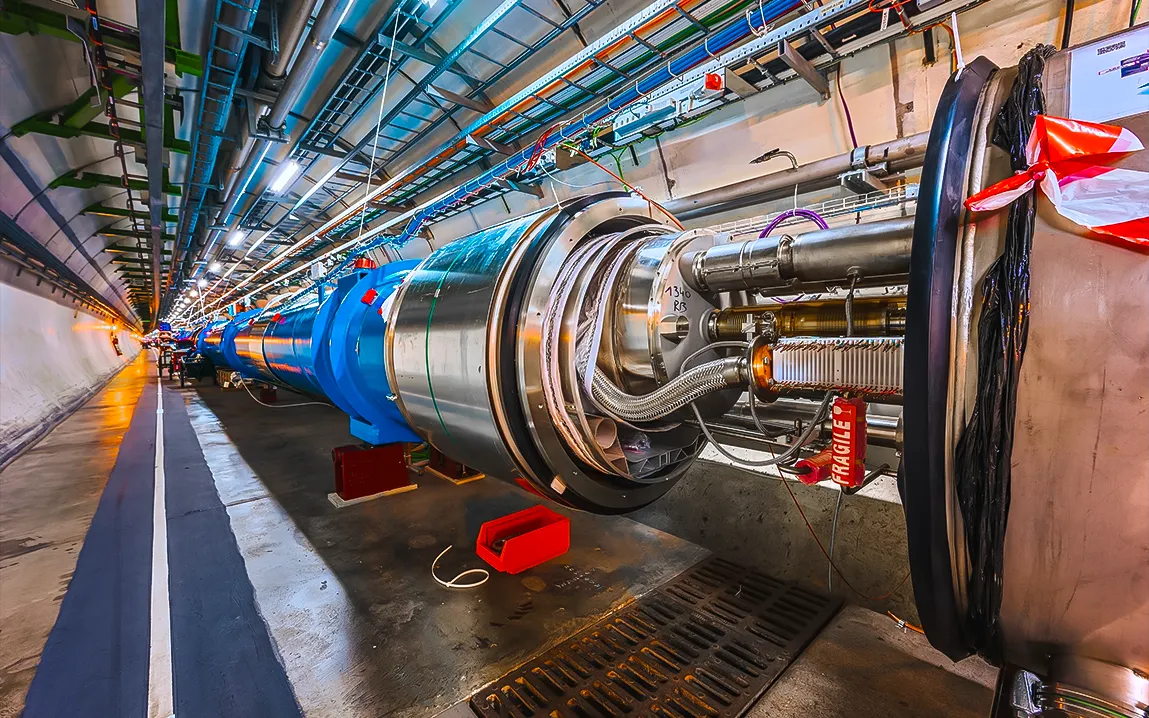The LHC at CERN is famous for its high-energy collisions-mostly of protons. But to study the primordial universe in even greater detail, physicists also collide heavy ions, like lead. But how do they take solid lead and turn it into beams racing at nearly the speed of light? It is a process equal parts careful preparation, high technology, and precision execution.
Handling and Vaporizing Lead
Safety precautions mark the beginning of this journey because lead is toxic. Technicians, wearing protective gloves, carefully place thin shavings of isotopically pure lead into a small ceramic oven about the size of an AA battery. This oven heats the lead to about 800 degrees Celsius, turning the solid metal into vapor. The principle here is similar to boiling water until it becomes steam.
Ionization: Creating Charged Particles
The neutral lead atoms need to be ionized once vaporized, and they must be responding to the electromagnetic fields in accelerators. Inside the ion source, microwaves create a plasma that heats electrons. These energetic electrons collide with the lead atoms, knocking out some of their electrons, which form a positively charged lead ion. These ions are then extracted by the application of a positive voltage and sent moving along to the next step in acceleration.
Initial Acceleration and Cooling
The freshly ionized lead ions are first injected into the Low Energy Ion Ring, LEIR. Initial acceleration, including a process called electron cooling, which reduces the spread of their velocities, making the beam more tightly packed, takes place here. This step is crucial for maintaining the quality and focus of the beam in subsequent stages of acceleration.
Further Acceleration in the PS and SPS
After LEIR, the ions transfer to PS for further acceleration. The next is going to the Super Proton Synchrotron (SPS). In SPS, a technique involving “momentum slip-stacking” is practiced. This consists of a process during which the energies of consecutive batches of the ion bunch are modified in order for them slowly to merge; thereby, the total amount of ions within one batch would increase in such a scenario. This invention enhances the intensity of the beam for more collisions upon arrival in the LHC.
Final Acceleration in the LHC
The climax of this journey is the LHC itself. In this tunnel, the lead ions reach energies of 5.36 TeV per nucleon pair, travelling at velocities very close to the speed of light. At various preselected points around the LHC, these high-energy beams are made to collide, re-creating in a minuscule way the condition of the universe a few microseconds after the Big Bang. These collisions are very helpful in understanding the quark-gluon plasma, a state of matter believed to exist at the beginning of the universe. There are challenges that the acceleration process of lead ions has posed. One of the major challenges is the loss of ions during the initial ionization phase, since not all the ions reach the desired charge state for acceleration. The control of the intensity of the beam and the protection of the accelerator components are also under continuous study and development. Techniques such as slip-stacking and improvements in cooling and collimation systems have been crucial in surmounting these issues and achieving more efficient and higher-intensity ion beams.
Conclusion
From solid lead into high-speed ion beams, LHC transforms-by the power of human ingenuity and an implacable desire to unveil the universe’s fundamental properties-something considered not even a speculation into reality. The process is well-designed and well-implemented from the vaporizing of lead up to the near light-speed collisions that allow ground-shaking research in conditions that shaped our cosmos.



